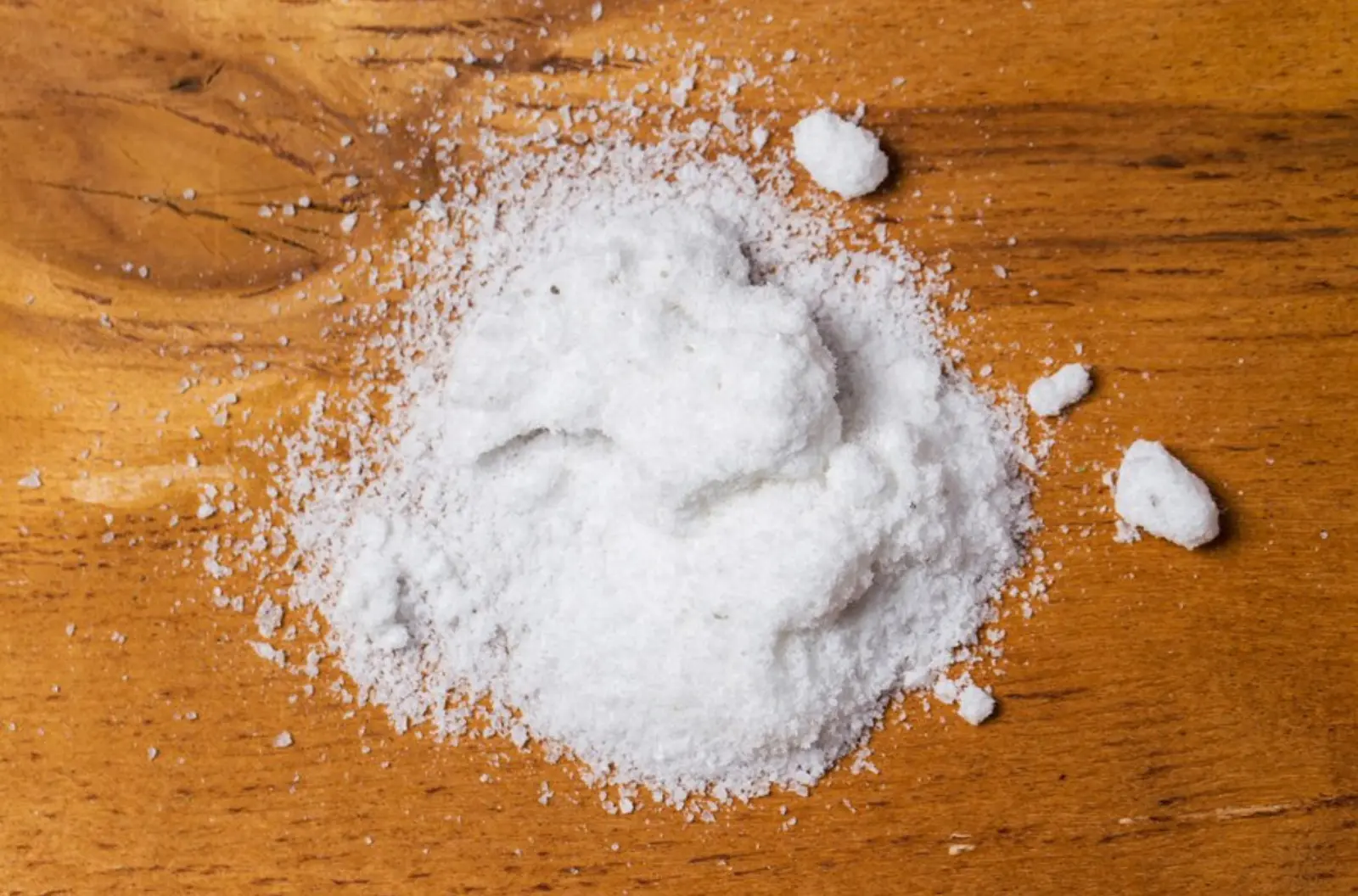Sodium gluconate is a highly versatile and essential food additive, playing a critical role in improving the quality, stability, and safety of various food products. Its unique properties make it indispensable in the food industry, offering solutions to challenges like maintaining flavor balance, extending shelf life, and enhancing texture. Derived from gluconic acid, this compound is a chelating agent, pH stabilizer, and preservative that caters to a wide range of applications in food formulations. Let’s explore its extensive benefits in detail.
Key Functional Roles of Sodium Gluconate
Chelating Agent
Sodium gluconate’s primary role as a chelating agent involves binding to metal ions such as calcium, magnesium, and iron. These ions, if left unchecked, can catalyze unwanted chemical reactions that degrade food quality. For instance, in dairy products, it prevents calcium from interacting with proteins, thereby avoiding texture issues like curdling or coagulation.
This functionality extends to beverages where sodium gluconate stabilizes formulations containing trace minerals, ensuring they remain evenly dispersed. It also helps reduce water hardness, improving the overall efficiency of food processing.
pH Stabilizer
Maintaining the correct pH level is essential for the stability and taste of food products. Sodium gluconate acts as an effective pH stabilizer, balancing acidity or alkalinity to achieve the desired taste and consistency. In sauces, dressings, and beverages, it prevents fluctuations in pH that could lead to spoilage, off-flavors, or changes in texture.
For example, in carbonated beverages, sodium gluconate ensures that the acidic profile remains constant, preserving the drink’s crisp taste and extending its shelf life.
Preservative
As a preservative, sodium gluconate inhibits oxidative reactions catalyzed by metal ions, which can lead to rancidity, discoloration, and loss of flavor. By neutralizing these ions, it protects food products from spoilage, particularly in canned goods and processed items.
In frozen foods, its preservative action prevents ice crystals from forming on the surface, maintaining the product’s texture and taste even after prolonged storage.


Looking for High-Quality Chemicals?
We offer a wide range of products for diverse industries.
How Sodium Gluconate Enhances Food Products?
Sodium gluconate plays a pivotal role in enhancing the performance and quality of food products through its multifaceted properties and applications. Its ability to act as a chelating agent, pH stabilizer, and preservative makes it indispensable in modern food formulations. Let’s explore in greater detail how sodium gluconate improves various aspects of food products, ensuring better texture, flavor, and shelf life.
1. Texture Improvement
Sodium gluconate significantly enhances the texture of a wide range of food products by stabilizing proteins, preventing separation, and ensuring uniformity. In dairy products like cheese, yogurt, and ice cream, it maintains a creamy consistency by binding with calcium ions and stabilizing casein proteins.
Example Applications:
- Cheese Production: Sodium gluconate prevents the gritty texture caused by calcium-phosphate deposits, ensuring a smooth and velvety product.
- Yogurt: It keeps the texture consistent, avoiding clumps or watery layers during storage.
- Ice Cream: Enhances creaminess by preventing crystallization, ensuring a soft and appealing product.
Technical Note:
Its chelating ability plays a critical role in preventing calcium interactions that could lead to protein coagulation or texture degradation.
2. Flavor Optimization
Sodium gluconate is highly effective at masking undesirable metallic or bitter tastes caused by the presence of metal ions in food formulations. By chelating these ions, it not only enhances the natural flavors of the ingredients but also improves the overall taste profile of the product.
Example Applications:
- Beverages: In juices and sports drinks, it masks the metallic taste of added minerals like magnesium and zinc, ensuring a cleaner flavor.
- Condiments: Balances flavors in dressings and sauces by reducing bitterness and metallic aftertastes.
Scientific Insight:
The chelation of metal ions like iron and copper minimizes their catalytic effects on oxidation, preserving the freshness and flavor of food products.
3. Shelf Life Extension
One of the most valuable benefits of sodium gluconate is its ability to extend the shelf life of food products. By inhibiting oxidative reactions catalyzed by metal ions, it prevents spoilage, discoloration, and nutrient loss.
Case Study:
- Canned Vegetables: Sodium gluconate prevents enzymatic browning and maintains the vibrant color of green beans and peas, even during long storage periods.
- Baked Goods: Protects the dough and finished products from staleness by chelating trace metals that could accelerate spoilage.
Technical Data:
In canned goods, the use of sodium gluconate reduces the oxidation rate of sensitive compounds by up to 50%, ensuring better preservation of taste and appearance.
4. Nutritional Support
In fortified foods and beverages, sodium gluconate enhances the bioavailability of essential minerals like calcium, magnesium, and zinc. By keeping these minerals in a soluble form, it ensures they are easily absorbed by the body, improving the nutritional value of the product.
Practical Example:
- Fortified Juices and Sports Drinks: Sodium gluconate prevents the precipitation of added minerals, ensuring consistent nutritional content in every serving.
Key Advantage:
Unlike other chelating agents, sodium gluconate maintains the stability of nutrients without altering the taste or appearance of the product.
5. Emulsification and Stability
In products that require the mixing of oil and water phases, sodium gluconate ensures stable emulsions. This property is particularly useful in dressings, mayonnaise, and other sauces where a uniform texture and consistency are essential.
Applications:
- Salad Dressings: Prevents oil and water separation, maintaining a smooth and appealing texture.
- Sauces: Ensures the stability of creamy and tomato-based sauces during storage and usage
Technical Benefit:
Its ability to stabilize emulsions reduces the need for synthetic emulsifiers, making the product cleaner and more natural.
6. Moisture Retention
Sodium gluconate helps retain moisture in various food products, ensuring they remain fresh and appealing for extended periods. This is particularly advantageous in baked goods and frozen desserts.
Example Applications:
- Baked Goods: Prevents dryness in bread, cakes, and pastries by maintaining hydration within the dough.
- Frozen Desserts: Reduces ice crystal formation, ensuring a smooth texture in ice cream and sorbets.
Data Insight:
Studies have shown that sodium gluconate-treated baked goods retain 20% more moisture compared to untreated ones, resulting in a softer texture and longer shelf life.


Need Reliable and Efficient Chemical Products?
Let us help you find the perfect match for your needs.
Applications in Food Products
Dairy Products
Sodium gluconate stabilizes proteins in milk-based products, ensuring smooth textures and preventing curdling or separation. It is widely used in cheese, yogurt, and ice creams to enhance creaminess and improve shelf stability.
Beverages
In juices, sodas, and energy drinks, sodium gluconate plays a dual role of flavor enhancement and oxidation prevention. It ensures clarity and prevents the development of off-flavors, especially in fortified drinks.
Canned Foods
Canned vegetables, fruits, and ready-to-eat meals benefit from sodium gluconate’s ability to prevent discoloration and maintain texture, even during long storage periods.
Bakery Items
In baked goods, sodium gluconate improves the elasticity of dough, ensuring soft and uniform bread and pastries. It also enhances the shelf life of these products by preventing staleness.
Condiments
Sodium gluconate stabilizes emulsions in salad dressings, mayonnaise, and other sauces, ensuring a smooth and consistent texture that remains appealing throughout its shelf life.
Have Questions About Our Product Range?
We’re here to assist you with the right solutions
Sodium gluconate is a game-changing additive in the food industry, offering multiple benefits that enhance the quality, stability, and appeal of food products. Its ability to improve texture, optimize flavor, and extend shelf life makes it a valuable ingredient across diverse food categories. As consumer demand for high-quality and sustainable food products continues to rise, sodium gluconate remains a cornerstone of innovation and performance in modern food formulations.
FAQs
1. What is the use of gluconic acid in the food industry?
Gluconic acid is widely used in the food industry for its chelating and pH-regulating properties. It prevents the formation of unwanted metal complexes in food products, thereby enhancing flavor and texture. Commonly found in dairy products, baked goods, and beverages, gluconic acid stabilizes formulations and ensures consistent quality. Additionally, its ability to inhibit microbial growth makes it a valuable component in extending the shelf life of processed foods.
2. What is the mechanism of action of sodium gluconate?
Sodium gluconate functions primarily as a chelating agent, binding with metal ions such as calcium and magnesium. By sequestering these ions, it prevents undesirable chemical reactions like oxidation or enzymatic browning in food products. In water treatment and industrial applications, sodium gluconate improves process efficiency by reducing scaling and corrosion. Its chemical stability across various pH levels ensures its effectiveness in diverse environments, maintaining the quality and performance of formulations.
3. Is sodium gluconate a preservative?
Yes, sodium gluconate acts as a preservative by inhibiting oxidative reactions catalyzed by metal ions. This helps prevent spoilage, discoloration, and loss of flavor in food products. While it is not a traditional antimicrobial preservative, its ability to stabilize and extend the shelf life of food makes it an essential additive in processed and packaged goods.
4. How are acids used in the food industry?
Acids play a critical role in the food industry by enhancing flavor, preserving freshness, and maintaining stability. Citric acid, acetic acid, and gluconic acid are commonly used to regulate pH levels, inhibit microbial growth, and improve the sensory appeal of foods. They also act as chelating agents, stabilizing formulations and preventing oxidation. Acids are essential in products like pickles, sauces, dairy items, and beverages to ensure a consistent taste and extended shelf life.
5. Is gluconic acid a preservative?
Gluconic acid itself is not classified as a conventional preservative, but it contributes to food preservation by acting as a chelating agent. By binding metal ions, it prevents oxidative spoilage and microbial growth indirectly. This action helps maintain the freshness, color, and flavor of food products, making gluconic acid a valuable additive in extending shelf life.





